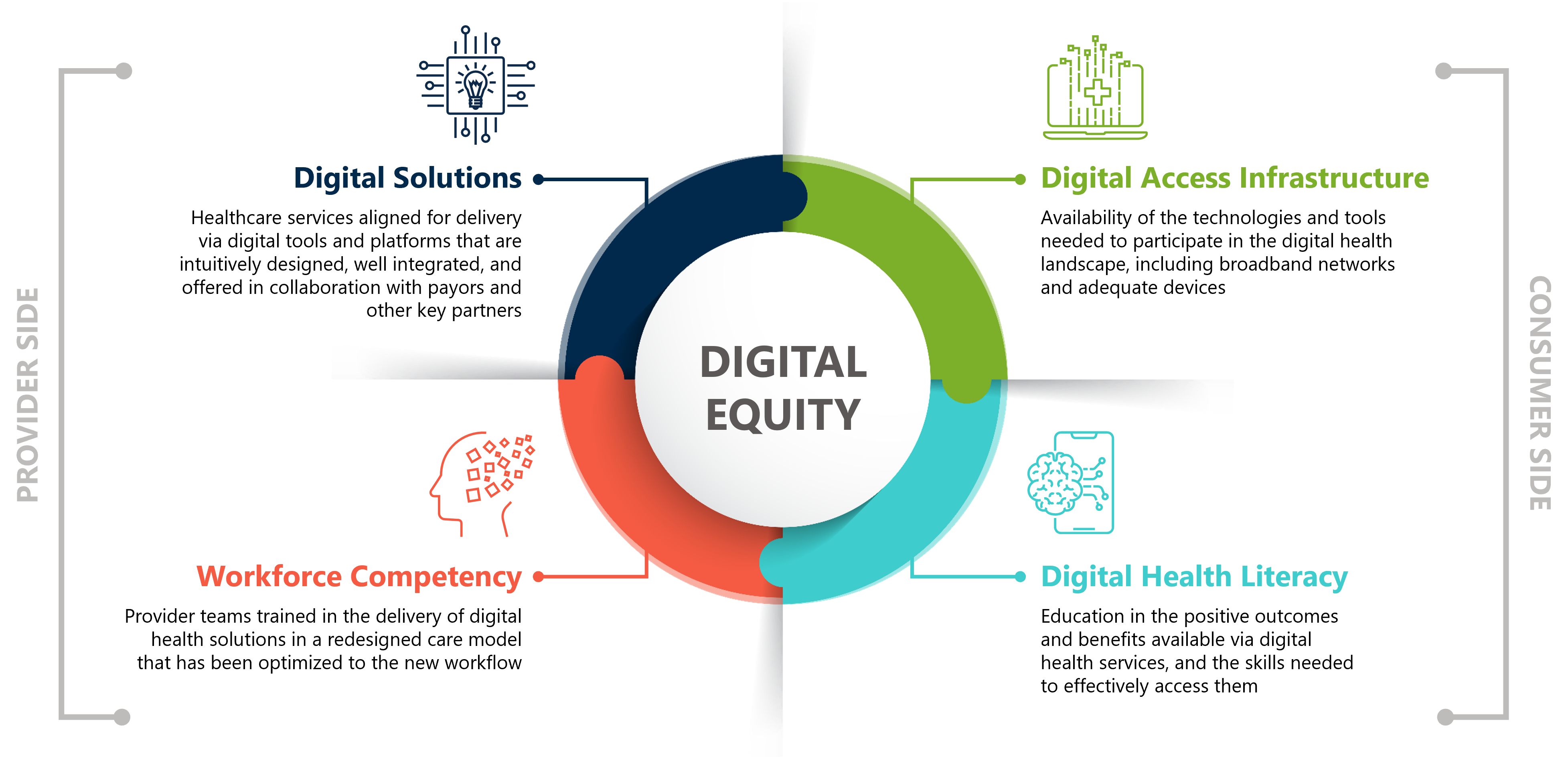This is a pivotal moment for healthcare technology leaders. The key role of technology in enabling rapid response to crisis management and continuity of service during the pandemic accelerated both the acceptance of technology as a means of care delivery and positioned technology leaders as agents of change. This moment also provides these leaders with an opportunity to advance the future role of technology in reshaping healthcare for the next decade as tech giants forge new partnerships in healthcare, major payors expand into the provider space, and a flood of venture-funded new entrants disrupt the market.
How can technology leaders enable the next wave of progress in healthcare? Most projections center on technology platforms and emerging innovations — such as accelerating digital health services (virtual care, hospital@home, etc.), leveraging augmented intelligence and machine learning, achieving seamless interoperability, and deploying robotic process automation.
These are all valuable advancements, but they will fall short of delivering on their ambitious goals if they are only accessible to a privileged few — or worse, if these technology advancements increase the burden on clinicians and on those trying to support them. The true opportunity for technology leaders is to become change agents in the achievement of digital equity.
Digital equity is a condition in which all individuals and communities have the information technology capacity they need for full participation in our society, democracy, and economy.1
Understand the Digital Determinants of Health
As the care delivery landscape was rapidly reshaped during the pandemic, the inequities in access and literacy to engage with digital tools and services became sorely evident — as did the reality that the healthcare workforce is unprepared to help overcome the challenge. Recent events have also highlighted the negative health consequences that befall certain populations as a result of adverse social determinants of health. Even as we grapple with addressing these social determinants, it is essential that we also recognize and address the digital determinants of health.
In fact, the digital divide is often most pronounced among populations who are already bearing the brunt of social determinants that contribute toward negative health outcomes. The Brookings Institution recently reported that 15 percent of Americans lack subscriptions to any broadband connection. The gap is more profound when examining access by income and race. 38 percent of households earning less than $20,000 lack a broadband subscription, whether in rural or urban areas. When researchers analyzed the data at a neighborhood-level, they discovered that the average majority-white tract had an average broadband adoption rate of 83.7 percent, while the average majority-Black tract (where more than 50 percent of residents are Black) had a broadband adoption rate of just 67.4 percent.2, 3
Poor patient engagement with technology, lack of access, and low digital health literacy have been shown to contribute to poor health outcomes. Technology leaders are in an ideal position to tackle the digital divide and achieve a more equitable digitally enabled personalized care model. 4
Digital literacy is the ability to use information and communication technologies to find, evaluate, create, and communicate information, requiring both cognitive and technical skills.
A digitally literate person: (1) possesses the variety of skills — technical and cognitive — required to find, understand, evaluate, create, and communicate digital information in a wide variety of formats; (2) is able to use diverse technologies appropriately and effectively to retrieve information, interpret results, and judge the quality of that information; (3) understands the relationship between technology, lifelong learning, personal privacy, and stewardship of information; (4) uses these skills and the appropriate technology to communicate and collaborate with peers, colleagues, family, and on occasion, the general public; and (5) uses these skills to actively participate in civic society and contribute to a vibrant, informed, and engaged community.5
Recognize the Challenges and the Fundamental Keys for Digital Equity
As an evidence-based industry, healthcare tends to shy away from early adoption of technology. But the pandemic was a catalyst for sudden change. At the outset of the pandemic, healthcare organizations were forced to abruptly shift to delivering care via telehealth. The escalating demand for safe and effective care in these new circumstances also drove a need for deploying digital tools — but there was little time for up-front design of an optimized user experience.
While substantial sums were invested into digital health during the pandemic, that investment is only expected to grow for health systems to reach their strategic goals going forward. In a recent Chartis Group survey of 225 health system executives conducted as part of the HIMSS Research Trust, 80 percent of respondents stated that they plan to increase their digital investments over the next five years.[6]
For these investments in tools and approaches to lead to a permanently improved standard of care, technology leaders must also prioritize efforts on internal and external organizational improvements, including:
- Ensuring smarter application design and integration with patient care workflows to reduce demands on overburdened clinicians and provide a more consistent experience throughout.
- Enhancing workforce training in digital applications and the workflow and communication changes that result from their use.
- Advocating for broader digital infrastructure availability.
- Sponsoring community-oriented educational programs and support for consumers.
The graphic below presents a model of the four key dimensions through which technology leaders can advance digital equity in their organizations and communities.
The 4 Key Dimensions for Digital Equity

Identify Actions to Lead Your Organization Toward Greater Equity
Technology leaders should incorporate these actions as part of their strategy to improve digital equity and address the digital determinants of health:
- Assess your organization’s digital and access efforts in collaboration with community representatives who can give voice to the consumer needs and experience to determine whether digital equity and the digital determinants of health are being addressed. If they are not, assume a leadership role in developing an organizational strategy.
- Lend your expertise and C-suite exposure to developing your organization’s community health strategy and advocating for public policy that promotes digital equity.
- Leverage your cross-industry partnerships (e.g., telecom, consumer electronics, financial services, etc.) to crowd-source creative solutions for improving digital equity.
- Build and deploy reliable, smarter tools that not only enhance access to care but do so in a manner that does not increase the burden on clinicians.
- Develop your workforce’s awareness of the interplay among technical, social, cultural, and economic realities; interactions with patients; and impact on health outcomes. Develop their skills to address these issues and help produce stronger health outcomes.
- Think broadly about your interoperability strategy so your organization is prepared to connect with community partners to jointly engage the community and patients (e.g., outreach programs and digital literacy education) to reshape the social and digital determinants that lead to poorer care and outcomes for certain patient populations.
Closing gaps in digital equity will not happen organically. Healthcare technology leaders have an opportunity now to become a major force for positive change as they take the initiative to tackle these challenges and create a more equitable future for all.
© 2025 The Chartis Group, LLC. All rights reserved. This content draws on the research and experience of Chartis consultants and other sources. It is for general information purposes only and should not be used as a substitute for consultation with professional advisors.


